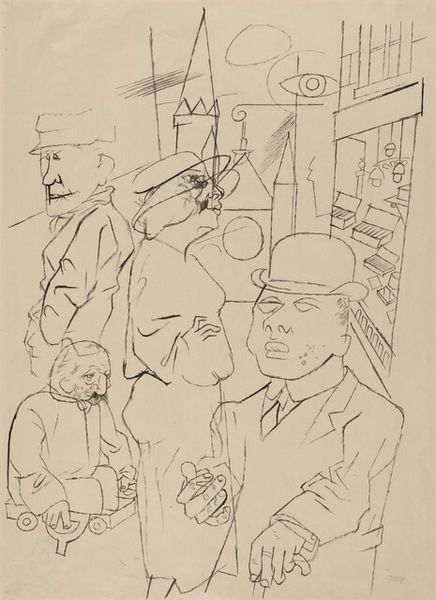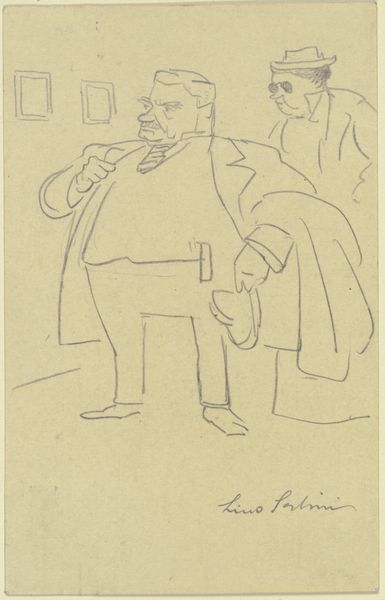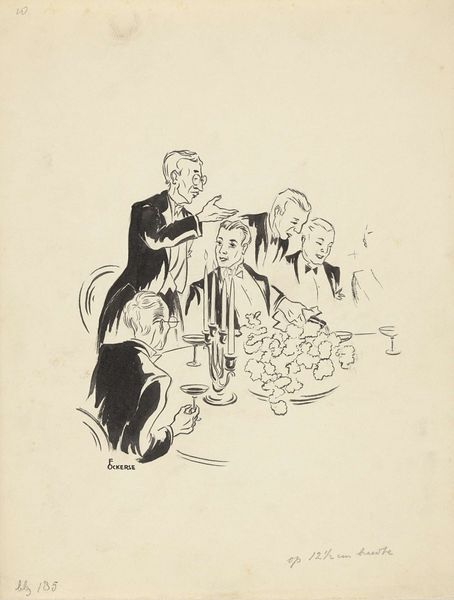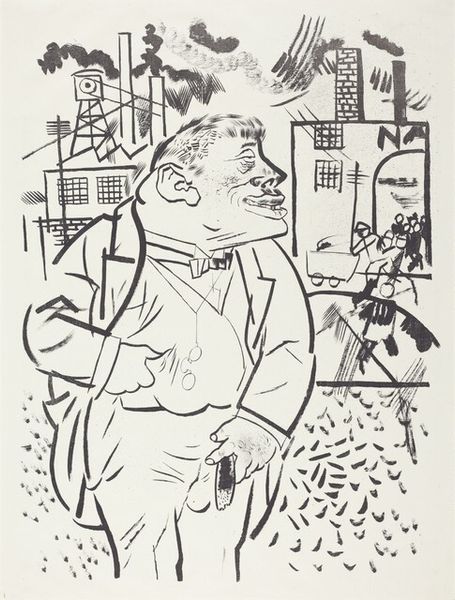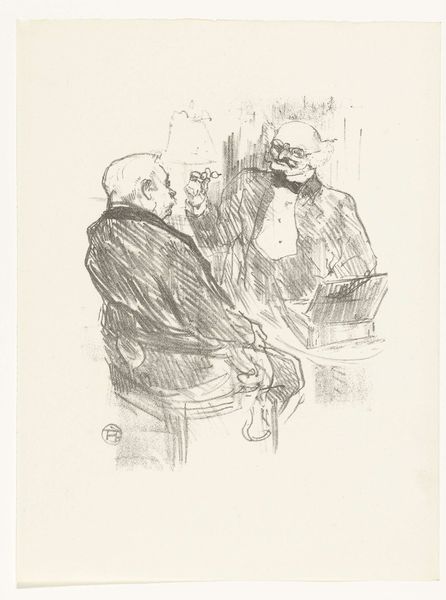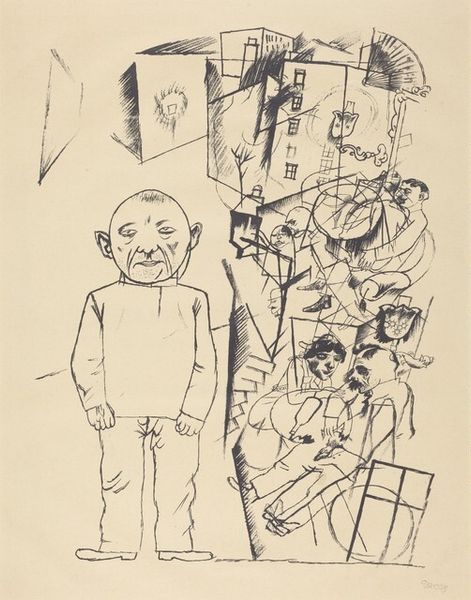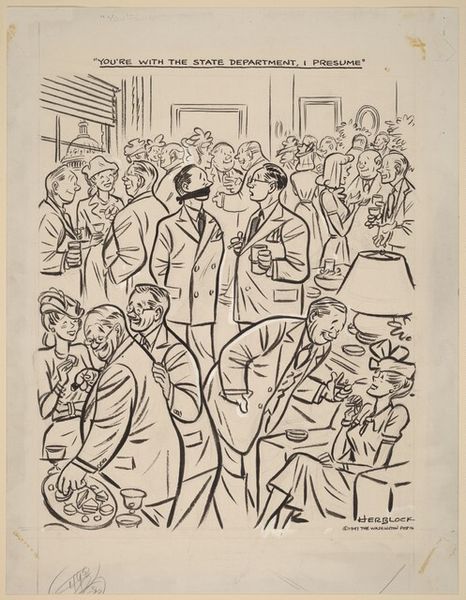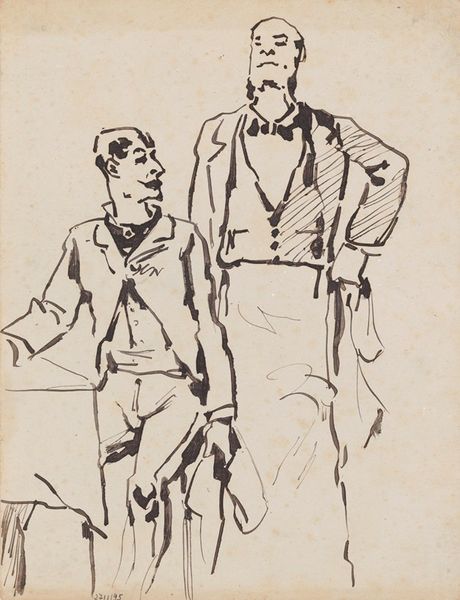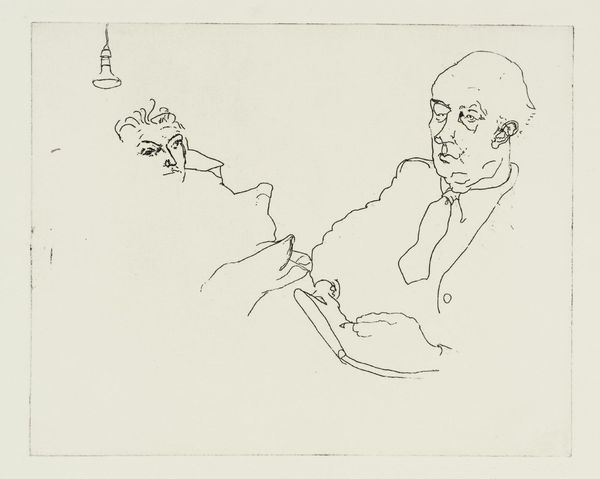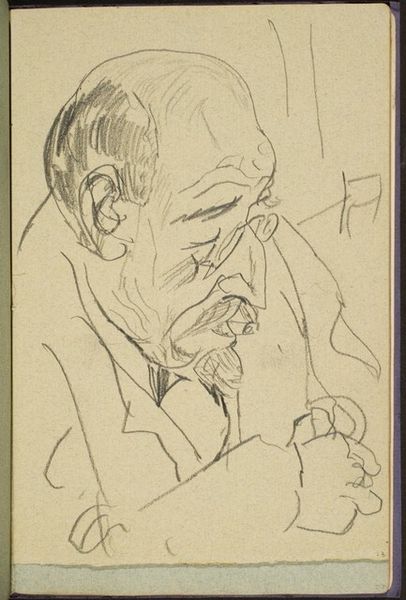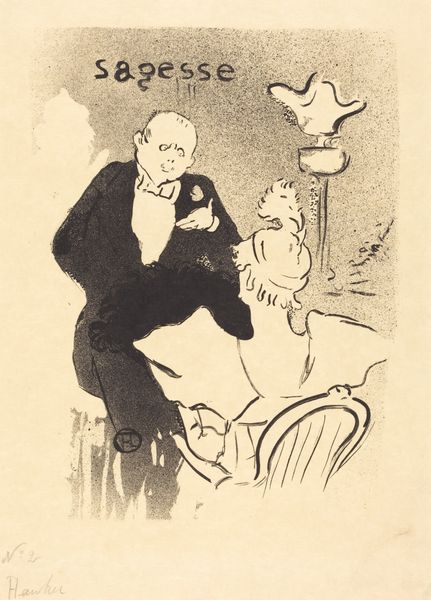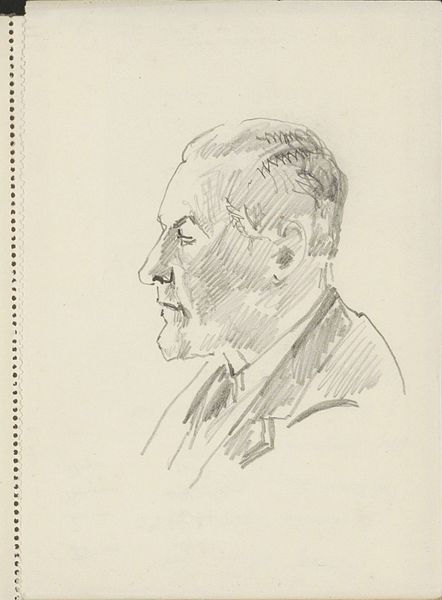
"Under my rule it shall be brought to pass, that potatoes and small-beer shall be con sidered a holiday treat; and woe to him who meets my eye with the audacious front of health. Haggard want, and crouching fear, are my insignia; and in this livery I will clothe ye."("In meinem Gebiet soll's soweit kommen, das Kartoffeln und Dünnbier ein Traktament für Festtage werden, und wehe dem, der mir mit vollen feurigen Backen unter die Augen tritt! Blässe der Armut und sklavische Furcht sind meine Leibf arbe; in diese Livrei will ich euch kleiden.") 1920 - 1921
0:00
0:00
drawing, print, ink, pen
#
drawing
#
new-objectivity
# print
#
pen illustration
#
german-expressionism
#
figuration
#
social-realism
#
ink
#
pen
#
cityscape
Dimensions: image: 48.1 × 37.62 cm (18 15/16 × 14 13/16 in.)
Copyright: National Gallery of Art: CC0 1.0
George Grosz created this drawing as a sharp commentary on social injustice. Notice the central figure, a corpulent man surrounded by wealth, symbolizing greed and power. This motif of the wealthy oppressor is an old one; consider the Roman emperors depicted as bloated and detached from the suffering of their people, or even the depictions of the biblical Herod. Here, Grosz presents it with a modern, brutal edge. The haggard figures in the background embody poverty and despair, mirroring the artist’s perception of post-war Germany. Their thin, gaunt faces echo images of famine and pestilence that can be found in medieval art. The emotional power of this image lies in its stark contrast: the grotesque abundance of the few versus the visible suffering of the many. This contrast works on a deep, subconscious level, evoking not only historical injustices but also the potential for future social upheaval. The image cycles through history, echoing earlier forms, but charged with the specific anxieties of its time.
Comments
No comments
Be the first to comment and join the conversation on the ultimate creative platform.
